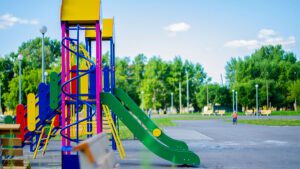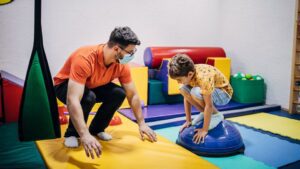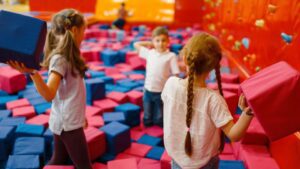التوازن والتنسيق من الجوانب الأساسية للنمو البدني للطفل. هذه المهارات ضرورية للأنشطة اليومية مثل المشي والجري والمشاركة في الألعاب الرياضية. من خلال إشراك الأطفال في أنشطة محددة، يمكن للآباء والمعلمين المساعدة في تعزيز هذه القدرات، مما يعزز الثقة بالنفس ويزيد من رفاهية الطفل بشكل عام.
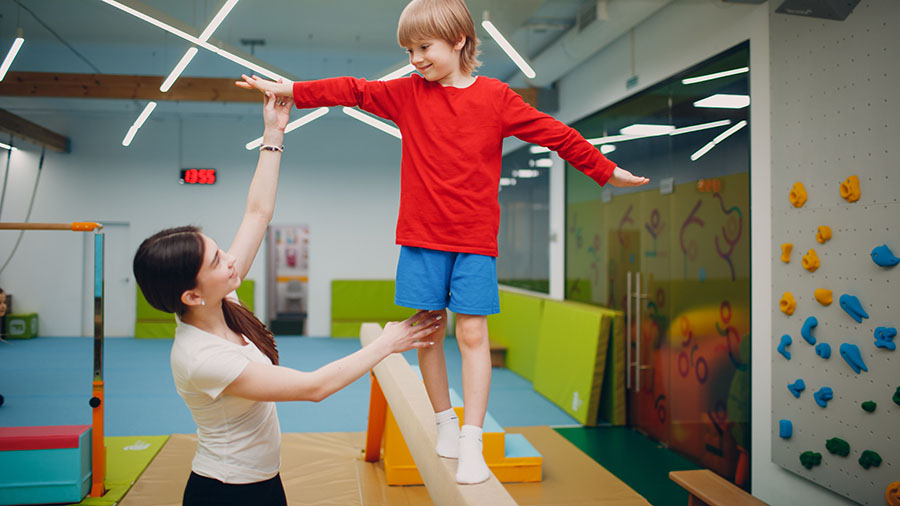
فهم التوازن والتنسيق
ما هو التوازن؟
يشير التوازن إلى القدرة على الحفاظ على وضع ثابت، سواء كان ثابتاً أو متحركاً. وهو ينطوي على التنسيق بين أنظمة الجسم المختلفة، بما في ذلك الجهاز الدهليزي (الأذن الداخلية)، ونظام الحس الحركي (الوعي بالجسم)، والنظام البصري. إن تطوير التوازن أمر بالغ الأهمية للقيام بمهام مثل الوقوف على قدم واحدة أو التسلق أو ركوب الدراجة.
ما هو التنسيق؟
التنسيق هو القدرة على استخدام أجزاء مختلفة من الجسم معاً بسلاسة وكفاءة. ويشمل كلاً من المهارات الحركية الدقيقة (مثل الكتابة أو تزرير القميص) والمهارات الحركية الإجمالية (مثل القفز أو الرمي). يساعد تحسين التنسيق الأطفال على أداء الحركات والأنشطة المعقدة بسهولة أكبر.

أنشطة لتحسين التوازن والتنسيق
1. تمارين عارضة التوازن
يتحدى المشي على عارضة التوازن ثبات الطفل ووعي جسمه. ابدئي بعارضة منخفضة وشجّعي الطفل على المشي عليها دون دعم. يقوي هذا النشاط العضلات الأساسية ويحسن التوازن.
2. المشي مع الحيوانات
إن تقليد حركات الحيوانات، مثل زحف الدببة أو قفزات الضفادع أو مشي السلطعون، يشرك مجموعات عضلية مختلفة ويعزز التنسيق. هذه الأنشطة ليست ممتعة فقط ولكنها فعالة أيضاً في تطوير المهارات الحركية.
3. هوبسكوتش
يتطلب لعب الحجلة من الأطفال القفز والهبوط بدقة، مما يعزز التوازن والتنسيق. تساعد هذه اللعبة الكلاسيكية أيضاً في التعرف على الأرقام واتباع التوجيهات.
4. مسارات العقبات
يشجع إعداد مسار العوائق مع الأنفاق والأقماع والحواجز الأطفال على اجتياز التحديات وتحسين خفة الحركة والوعي المكاني. اضبط مستوى الصعوبة بناءً على قدرات الطفل.
5. اليوغا للأطفال
تعزز وضعيات اليوغا البسيطة مثل وضعية الشجرة أو وضعية الكلب المتجه للأسفل التوازن والمرونة والتركيز. كما تعزز اليوغا أيضاً الاسترخاء واليقظة الذهنية مما يساهم في الرفاهية العامة.

دمج التوازن والتنسيق في الحياة اليومية
اللعب في الهواء الطلق
توفر أنشطة مثل تسلق الأشجار أو لعب المطاردة أو ركوب السكوتر فرصاً طبيعية للأطفال لتطوير التوازن والتنسيق. يشجع اللعب في الهواء الطلق أيضاً التفاعل الاجتماعي والإبداع.
المهام اليومية
شجّعي الأطفال على أداء المهام التي تتطلب التوازن والتنسيق، مثل حمل البقالة أو إعداد المائدة أو ارتداء الملابس بأنفسهم. تبني هذه الأنشطة الثقة والاستقلالية.
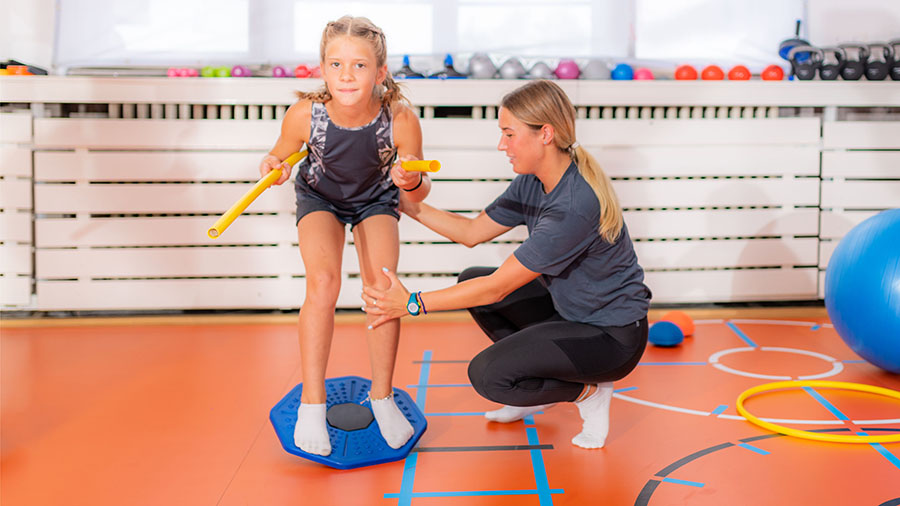
متى تطلب الإرشاد المهني
إذا كان الطفل يعاني باستمرار من مشاكل في التوازن أو مهام التنسيق التي تتجاوز مراحل النمو النموذجية، فقد يكون من المفيد استشارة طبيب أطفال أو معالج مهني. يمكن للتدخل المبكر معالجة المشاكل الكامنة ودعم نمو الطفل.

الخاتمة
إن تعزيز التوازن والتنسيق لدى الأطفال أمر حيوي لنموهم البدني والمعرفي. من خلال دمج الأنشطة الجذابة في الروتين اليومي، يمكن للآباء والمعلمين دعم الأطفال في بناء هذه المهارات الأساسية. تذكر أن الثبات والتشجيع هما مفتاح تعزيز النمو والثقة.
اكتشف مجموعتنا من معدات الملاعب المصممة لتعزيز التوازن والتنسيق لدى الأطفال. اتصل بنا اليوم لمعرفة المزيد وتحسين بيئة اللعب الخاصة بك.

